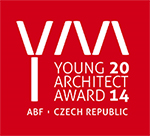Former warehouses, manufacturing halls, mining areas with ecological burdens, unused railway facilities – these are the types of locations that students and young architects under 33 dealt with in the Young Architect Award 2014 competition. The competitors looked for ways to bring life back to problematic urban areas and utilize them as effectively as possible for the benefit of the city's residents. By the deadline of July 3, 2014, a total of 54 entries had been submitted, with the majority of participants coming from the Czech Republic, although the international scope is also provided by works from authors in Slovakia. The competition has been held for the 6th year and is supported by leading Czech architects, led by Bořek Šípek and other personalities.
















